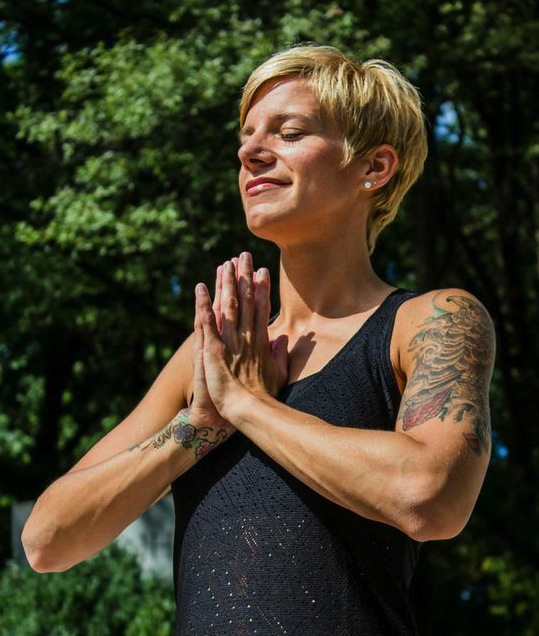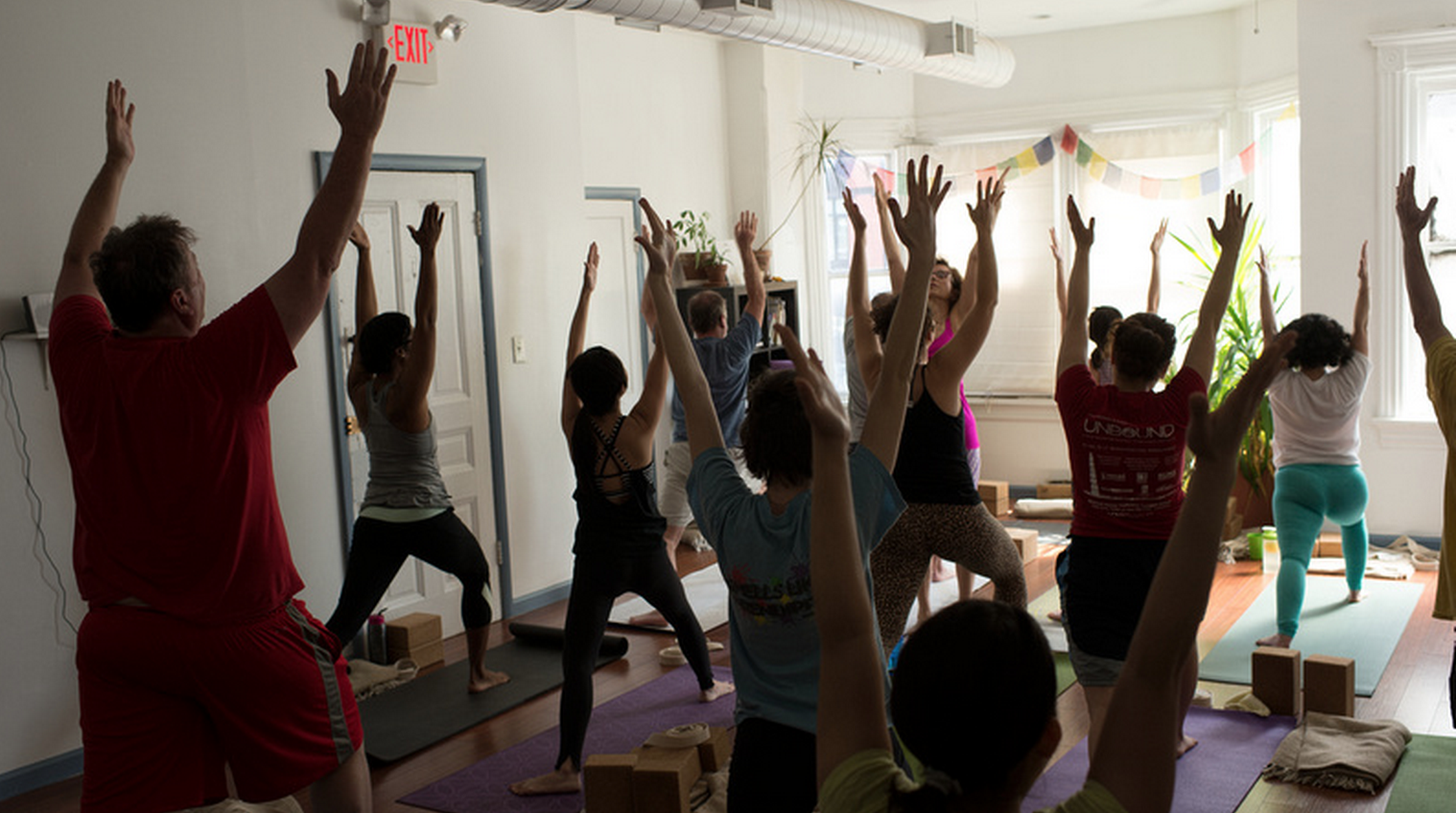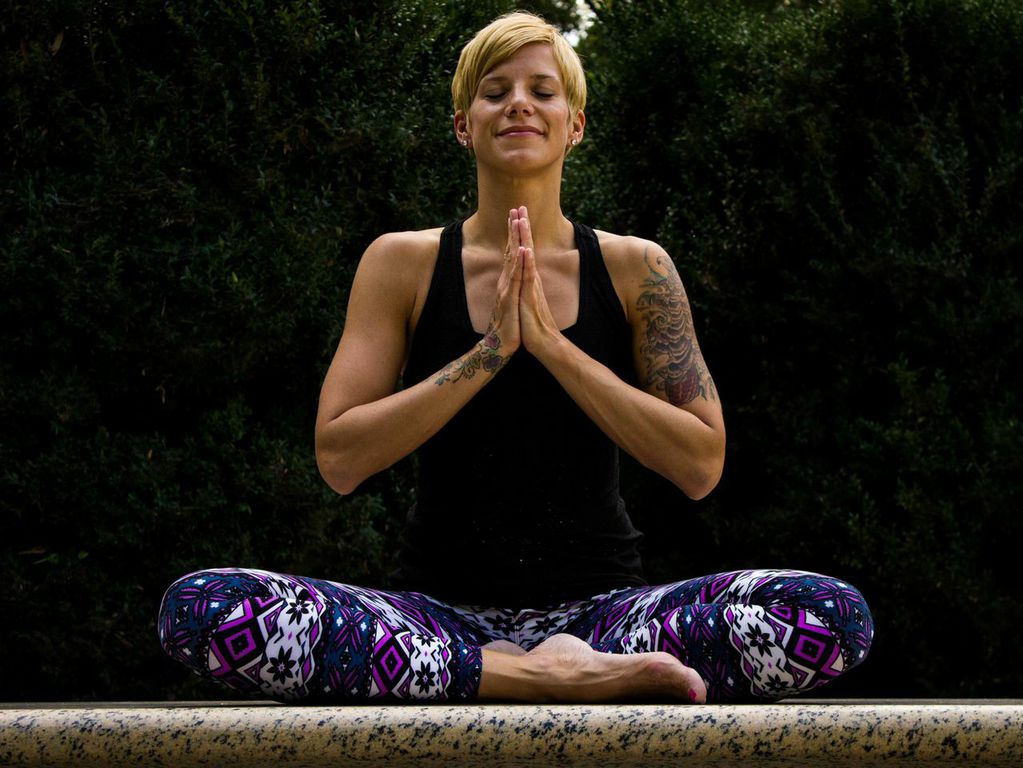Upon graduating from Yoga District’s 200 Hour teacher training in summer of 2014, Brooke has been teaching weekly stress management focused yoga classes at Yoga District. We are honored to share her holistic approach to stress management and anxiety through yoga with you here. Please read on to hear more from Brooke, check out her yoga classes on the schedule, and consider attending her workshop on stress and anxiety management through yoga in June.
It’s safe to say that everyone is going to experience stress frequently throughout their lives and unfortunately, a portion of the population will also experience anxiety. Notice I use the word “experience” and not “suffer” here! That’s because I sincerely believe no one has to suffer with stress or anxiety when there are a multitude of tools one can use to manage both.
A common question on people’s minds is – what’s the difference between these two states that are often thought of as being synonymous with one another? Well, here’s the answer! Stress is how we respond to everyday pressures, therefore it’s fairly normal for people to experience stress. People can easily point to what’s happening in their environment that is the cause of their stress, whereas it’s typically difficult to pinpoint what triggers anxiety. Stress will result in tension and a release of norepinephrine and adrenaline, whereas anxiety prompts the body to go into fight or flight mode. Those symptoms tend to be more intense and at times even debilitating. What’s happening is that the brain is for some reason getting the message that you’re in imminent danger when you’re actually not. Sometimes this response even becomes a full-blown panic attack.
The good news there are holistic ways to cope with anxiety. We have to begin with relaxing the body. What’s happening when the body becomes super tense, is that the pelvic floor muscles put pressure on the Vagus nerve, which is the a major nerve that runs along our spine that activates the parasympathetic nervous system (our relaxed state). At the same time this is happening, the neo-cortex – the part of the brain responsible for concentration and problem-solving – is being flooded with cortisol, which disrupts it’s proper functioning. That’s why we have so much trouble thinking clearly when we’re anxious. So we begin with relaxing the body – specifically the pelvic floor muscles – in order to eliminate or at least reduce the anxiety. When you relax the body, the Vagus nerve will activate the parasympathetic nervous system and at the same time, the executive functioning part of the brain comes back online. Once this happens, you should be able to carry on with your day.
Another tool that is a nice compliment to relaxing the body is diaphragmatic breathing. Diaphragmatic breathing also stimulates the parasympathetic nervous system, massages the internal organs, and brings more oxygen into the body and brain. You know that deep breathing called Ujayi Pranayama that you maintain throughout your yoga asana practice? Well that breathing practice is a form of diaphragmatic breathing! So if you’re practiced at yoga, you should be able to easily access diaphragmatic breathing in the moment when you really need it. Doing this type of breathing in combination with a muscle relaxation technique is the best way to respond to anxiety.
When it comes to managing stress, you need solid ongoing self-care practices. Good self-care includes aerobic activity several times a week, a healthy diet, and adequate sleep, just to name a few. Hopefully a regular yoga asana practice is also included in your self-care plan. No matter what style you do, your yoga practice will help to relax the muscles, calm the nervous system, and quiet the mind. Many yoga poses even directly stimulate the parasympathetic nervous system, such as forward folding poses and inversions. I think of balancing poses as helpful too because of the focus it takes to remain in the pose. When your mind is concentrating on balance, it can’t possibly be on whatever anxious thoughts are plaguing you! If you have the time, following up your yoga asanas with several rounds of another form of pranayama (controlled breathing), such as Nadi Sodhana (alternate-nostril breathing) and meditation make for a perfect well-rounded calming practice.
Hopefully you found this basic information about using yoga to de-stress and manage anxiety useful. If you’d like to experience a yoga asana practice designed to de-stress, as well as more information on how to create a comprehensive self-care regimen and tools for coping with anxiety (such as a pelvic-floor relaxation technique) please attend Release Into Yoga: A Stress Management Workshop at the 14th Street Studio on the top floor on Saturday June 13th from 2:00 to 4:00 pm. Hope to see you there!





